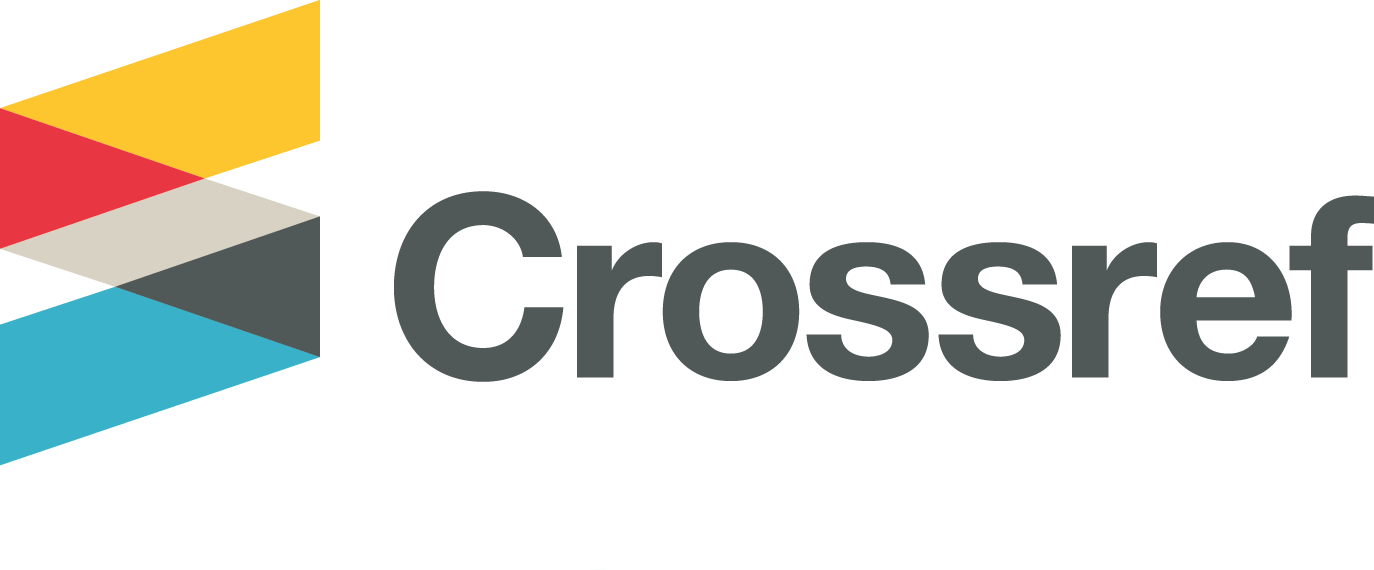Physical Appearance Comparison and Body Dissatisfaction in Women Users of Tiktok and Instagram
Abstract
This research aims to determine the significance of the relationship between physical appearance comparison and body dissatisfaction in female users of TikTok and/or Instagram. Participants were 203 female TikTok and/or Instagram users using purposive sampling techniques. The data collection method used is the Physical Appearance Comparison Scale-Revised (PACS-R) from Schaefer and Thompson (2014) which has been tested for construct validity in Indonesia by Qidwati (2019) and the Body Dissatisfaction Scale (BDS) from Tariq and Ijaz (2015 ) which has been tested for construct validity in Indonesia by Arshuha (2019). The data analysis technique used is the Pearson Product Moment correlation technique. From the results of data analysis, a correlation coefficient (rxy) of 0.548 was obtained with a significance value of 0.000 (p<0.01), which means there is a significant positive relationship between physical appearance comparison and body dissatisfaction in female TikTok and/or Instagram users. This means that a high physical appearance comparison will be followed by high body dissatisfaction, whereas if the physical appearance comparison is low it will be followed by low body dissatisfaction. The implication of this research is that women who use TikTok and/or Instagram need to reduce the behavior of comparing their own appearance with the appearance of others (physical appearance comparison) in order to avoid and not experience body dissatisfaction which can make women feel dissatisfied with their appearance and body shape.
Penelitian ini bertujuan untuk mengetahui signifikansi hubungan antara physical appearance comparison dengan body dissatisfaction pada wanita pengguna TikTok dan/atau Instagram. Partisipan berjumlah 203 wanita pengguna TikTok dan/atau Instagram dengan menggunakan teknik purposive sampling. Metode pengumpulan data yang digunakan yaitu Physical Appearance Comparison Scale-Revised (PACS-R) dari Schaefer dan Thompson (2014) yang telah di uji validitas konstruk di Indonesia oleh Qidwati (2019) dan Body Dissatisfaction Scale (BDS) dari Tariq dan Ijaz (2015) yang telah di uji validitas konstruk di Indonesia oleh Arshuha (2019). Teknik analisis data yang digunakan adalah teknik korelasi Product Moment Pearson. Dari hasil analisis data diperoleh koefisien korelasi (rxy) 0.548 dengan nilai signifikansi 0.000 (p<0,01) yang artinya ada hubungan positif yang signifikan antara physical appearance comparison dengan body dissatisfaction pada wanita pengguna TikTok dan/atau Instagram. Hal ini bermakna bahwa physical appearance comparison tinggi akan diikuti dengan body dissatisfaction yang tinggi sebaliknya apabila physical appearance comparison rendah maka akan diikuti dengan body dissatisfaction yang rendah. Implikasi dari penelitian ini yaitu wanita yang menggunakan TikTok dan/atau Instagram perlu untuk mengurangi perilaku membandingkan penampilan diri dengan penampilan orang lain (physical appearance comparison) supaya terhindar dan tidak mengalami body dissatisfaction yang dapat membuat wanita merasa tidak puas akan penampilan dan bentuk tubuhnya.
Keywords
Full Text:
FULL TEXTReferences
Alifa, A. N., & Rizal, G. L. (2020). Hubungan social comparison dan body dissatisfaction pada wanita yang memiliki kelebihan berat badan (overweight). Proyeksi: Jurnal Psikologi, 15(2), 110-119. https://doi.org/10.30659/jp.15.2.110-119
Angelina, P., Christanti, F. D., & Mulya, H. C. (2021). Gambaran self esteem remaja perempuan yang merasa imperfect akibat body shaming. Experientia: Jurnal Psikologi Indonesia, 9(2), 94–103. https://doi.org/10.33508/exp.v9i2.2889
Arshuha, F. (2019). Pengaruh perbandingan sosial dan perfeksionisme terhadap body dissatisfaction pada mahasiswi pengguna instagram. (Bachelor's Thesis). Fakultas Psikologi, Universitas Islam Negeri Syarif Hidayatullah Jakarta, Indonesia.
Ayuningtyas, F., & Agustrijanto. (2022). Pemanfaatan konten kecantikan di youtube oleh remaja siswi (Studi kasus di SMA Angkasa 2 Jakarta Timur). KALBISIANA Jurnal Sains, Bisnis Dan Teknologi, 8(2), 1601–1613.
Azwar, S. (2016). Reliabilitas dan validitas. Pustaka Pelajar.
Budianti, R. D., & Nawangsih, E. (2020). Hubungan appearance comparison dan body dissatisfaction pada remaja pengguna instagram di Kota Bandung. Jurnal Universitas Islam Bandung, 6(2), 657–662. http://dx.doi.org/10.29313/.v6i2.23964
Cash, T. F., & Pruzinsky, T. (2002). Body image : A hand book of theory, research, and clinical practise. Guilford Press.
de Vries, D. A., Peter, J., de Graaf, H., & Nikken, P. (2016). Adolescents’ social network site use, peer appearance-related feedback, and body dissatisfaction: Testing a mediation model. Journal of Youth and Adolescence, 45(1), 211–224. https://doi.org/10.1007/s10964-015-0266
Dewi, A. E., Noviekayati, I., & Rina, A. P. (2020). Social comparison dan kecenderungan body dissatisfaction pada wanita dewasa awal pengguna instagram. Sukma : Jurnal Penelitian Psikologi, 1(2), 173–180.
Endarwati, E. T., & Ekawarti, Y. (2021). Efektifitas penggunaan sosial media tik tok sebagai media promosi ditinjau dari perspektif buying behaviors. Mandar: Management Development and Applied Research Journal, 4(1), 112-120. https://doi.org/10.31605/mandar.v4i1.1318
Fisher, E., Dunn, M., & Thompson, J. K. (2002). Social comparison and body image: An investigation of body comparison processes using multidimensional scaling. Journal of Social and Clinical Psychology, 21(5), 566–579. https://doi.org/10.1521/jscp.21.5.566.22618
Jiotsa, B., Naccache, B., Duval, M., Rocher, B., & Grall-Bronnec, M. (2021). Social media use and body image disorders: Association between frequency of comparing one’s own physical appearance to that of people being followed on social media and body dissatisfaction and drive for thinness. International Journal of Environmental Research and Public Health, 18(6), 1–14. https://doi.org/10.3390/ijerph18062880
Kusumaningtyas, D. N. (2019). Body dissatisfaction pada wanita dewasa awal yang mengalami obesitas. Psikoborneo: Jurnal Ilmiah Psikologi, 7(3), 466–474. https://doi.org/10.30872/psikoborneo.v7i3.4806
Maimunah, S., & Yohana, S. (2021). Hubungan media sosial dengan body dissatisfaction pada mahasiswa perempuan di Kota Surabaya. Character: Jurnal Penelitian Psikologi, 8(2), 224–233.
Nawiroh, S., & Dita, R. (2020). Konstruksi kecantikan perempuan pada feature how to do di kanal beauty fimela.com construction of women’s beauty on the feature how to do in the beauty fimela.com. Jurnal ISIP: Jurnal Ilmu Sosial Dan Politik, 17(1), 38–49.
Prameswari, R. T. (2020). Pengaruh perbandingan sosial terhadap ketidakpuasan tubuh pada remaja akhir perempuan (studi tentang physical appearance). Cognicia, 8(1), 90–101. https://doi.org/10.22219/cognicia
Prihatiningsih, W. (2017). Motif penggunaan media sosial instagram di kalangan remaja. Communication, 8(1), 51-65. https://doi.org/10.36080/comm.v8i1.651
Qidwati, S. A. (2019). Hubungan antara physical appearance comparison dan self-compassion dengan body image sebagai mediator pada remaja perempuan. Calyptra, 8(1), 720-732.
Rachmawati, A. A., & Pradekso, T. (2019). Hubungan intensitas menonton youtube beauty vlogger dan persepsi mengenai kredibilitas beauty vlogger dengan perilaku menggunakan makeup oleh remaja. Interaksi Online, 7(4), 236–245.
Restiana, R., & Dwiastuti, I. (2021). Gambaran psikologis korban body shaming: melalui tinjauan body dissatisfaction dengan self-esteem dan afek negatif. In Seminar Nasional Psikologi UM, 1(1), 430–436.
Ruth, D., & Candraningrum, D. A. (2020). Pengaruh motif penggunaan media baru tiktok terhadap personal branding generasi milenial di instagram. Koneksi, 4(2), 207-214. https://doi.org/10.24912/kn.v4i2.8093
Santoso, V. M., Fauzia, R., & Rusli, R. (2019). Hubungan antara kepuasan citra tubuh dengan kecenderungan body dismorphic disorder pada wanita dewasa awal di Kota Banjarbaru. Jurnal Kognisia, 2(1), 55–60.
Schaefer, L. M., & Thompson, J. K. (2014). The development and validation of the Physical Appearance Comparison Scale-Revised (PACS-R). Eating Behaviors, 15(2), 209–217. https://doi.org/10.1016/j.eatbeh.2014.01.001
Siswoaribowo, A., Taukhid, M., & Paramita, D. (2020). Pengaruh penerapan self affirmation terhadap penurunan body dissatisfaction pada remaja akhir. Jurnal ILKES (Ilmu Kesehatan), 11(2), 285-295. https://doi.org/10.35966/ilkes.v11i2.171
Sugiyono. (2019). Metode penelitian kuantitatif, kualitatif, dan r&d (2nd ed.). Alfabeta.
Sumanty, D., Sudirman, D., & Puspasari, D. (2018). Hubungan religiusitas dengan citra tubuh pada wanita dewasa awal. Jurnal Psikologi Islam Dan Budaya, 1(1), 9–28. https://doi.org/10.15575/jpib.v1i1.2076
Tariq, M., & Ijaz, T. (2015). Development of body dissatisfaction scale for university students. Pakistan Journal of Psychological Research, 30(2), 305–322.
Tiggemann, M., Hayden, S., Brown, Z., & Veldhuis, J. (2018). The effect of Instagram “likes” on women’s social comparison and body dissatisfaction. Body Image, 26, 90–97. https://doi.org/10.1016/j.bodyim.2018.07.002
Utomo, T. P. (2022). Optimalisasi media sosial untuk pemasaran perpustakaan perguruan tinggi. Buletin Perpustakaan Universitas Islam Indonesia, 5(1), 99–133.
Wijayadi, D. W. (2022). Hubungan antara physical appearance comparison dengan body dissatisfaction pada remaja perempuan. (Doctoral Dissertation). Fakultas Psikologi, Universitas Mercu Buana Yogyakarta, Indonesia.
DOI: http://dx.doi.org/10.30872/psikoborneo.v11i4.12234
Refbacks
- There are currently no refbacks.
Copyright (c) 2023 Ni Made Rutina Rizki Apriliani & Christiana Hari Soetjiningsih

This work is licensed under a Creative Commons Attribution-ShareAlike 4.0 International License.
PSIKOBORNEO: Jurnal Ilmiah Psikologi Published by Faculty of Social and Political Siences, University of Mulawarman, Samarinda, East Kalimantan and This work is licensed under a Creative Commons Attribution-ShareAlike 4.0 International License.
________________________________________
PSIKOBORNEO: Jurnal Ilmiah Psikologi
Department of Psychology
Faculty of Social and Political Siences, University of Mulawarman
Jl. Muara Muntai Kampus Gn. Kelua Samarinda 75411
Phone: +62 813 35350368
E-Mail: psikoborneo@gmail.com / psikoborneo@fisip.unmul.ac.id
















